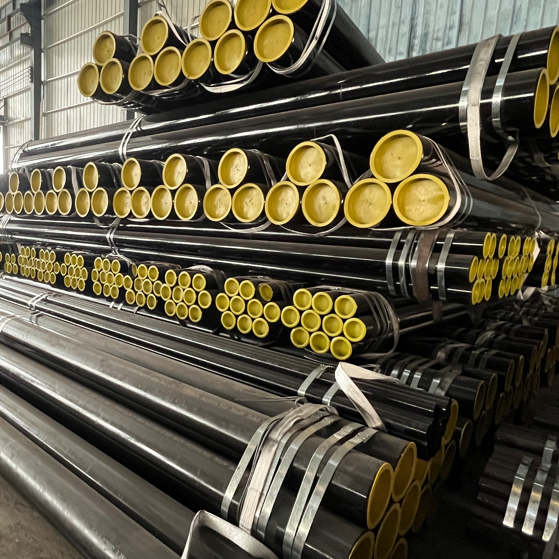The 20 # seamless steel pipe is made from steel ingots or solid pipe blanks that are perforated into a capillary, and then hot rolled, cold rolled, or cold drawn.
The 20 # seamless steel pipe plays an important role in China's steel pipe industry. 20 # seamless steel pipe is a low-carbon steel pipe, which is generally divided into three types: low-carbon steel, medium carbon steel, and high carbon steel. Among them, 45 # steel is medium carbon steel, lower than 45 # is low carbon steel, and higher than 45 # is high carbon steel. If there are no special requirements for seamless steel pipes, 20 # seamless steel pipe is generally used.
The material of 20 # seamless steel pipe is 20 # steel, which has slightly higher strength than 15 # and is rarely quenched, without tempering brittleness. The parts with high cold deformation plasticity, generally used for bending, calendering, edge bending and hammer arch processing, good welding performance of arc welding welding and contact welding, small thickness during gas welding, strict shape requirements or complex shapes are prone to cracks. The cold drawn or normalized state has better machinability than the annealed state, and is generally used for manufacturing workpieces with low stress and high toughness requirements.
Seamless steel pipes are generally used: they are made of high-quality carbon bonded steel 16Mn, 5MnV, or 40Cr, 30CrMnSi, 45Mn2, 40MnB, etc., hot-rolled or cold-rolled. 10. Seamless pipes made of grade 20 low-carbon steel are mainly used for fluid transportation pipelines. Seamless pipes made of medium carbon steel such as 45 and 40Cr are used to manufacture mechanical parts, such as load-bearing parts for automobiles and tractors. Seamless steel pipes are generally used to ensure strength and flattening tests. Hot rolled steel pipes are delivered in hot rolled or heat treated condition; Cold rolling is delivered in a heat treated state.
 Why should Seamless steel pipes be epoxy powder coated?
Why should Seamless steel pipes be epoxy powder coated?
 ASTM A106 Thick-walled steel pipe production steps
ASTM A106 Thick-walled steel pipe production steps
 Shengtian Group successfully participated in the Russian Oil and Gas Exhibition
Shengtian Group successfully participated in the Russian Oil and Gas Exhibition
 Is API 5L Black Steel Pipe Good For Air Lines?
Is API 5L Black Steel Pipe Good For Air Lines?